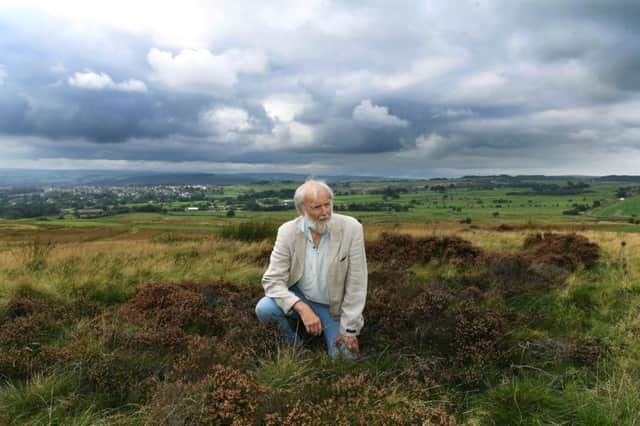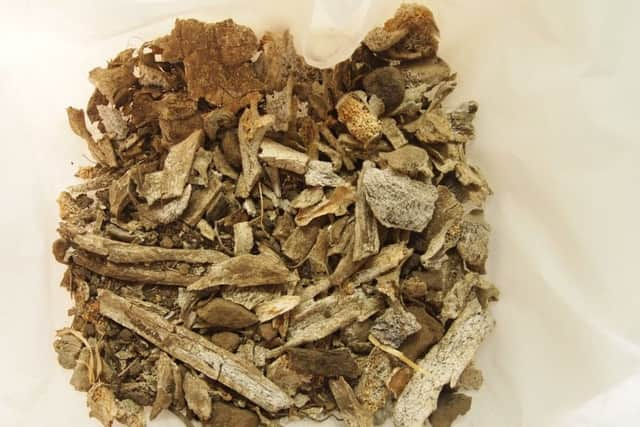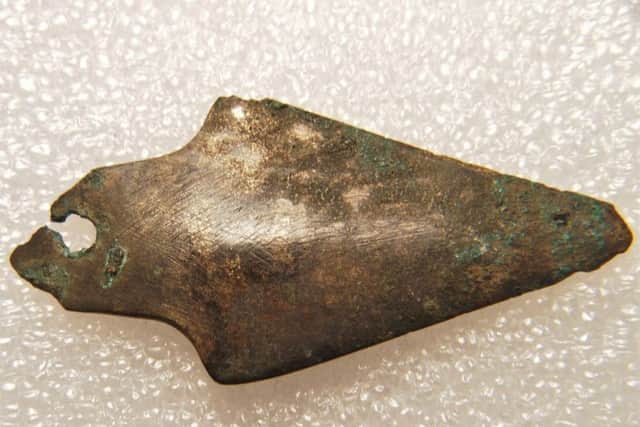Human bones discovered on Yorkshire moor in 1904 found to be Bronze Age remains


The forensic identification of an early Bronze Age inhabitant, a century after his bones were put in storage, sheds new light on a time in the county’s history when stone was only beginning to give ground to metal.
His apparent high social status also suggests that Baildon was as desirable an area then as it is now.
Advertisement
Hide AdAdvertisement
Hide AdIt was in 1904 that the remains of the unnamed man were unearthed by workers as they dug the seventh green on the moortop golf course that overlooks the Bradford suburb.


Rumour had it that they wanted to dump what they found in their wheelbarrow and say nothing, but someone spotted what was afoot and alerted the council.
In the hasty excavation which followed, the man’s cremated bones, crushed but not powdered, were discovered inside a complete decorated burial urn, along with a copper or bronze knife, a flint arrowhead, and a perforated bone tube.
However, it has taken until now to put the hoard into its proper historical context.
Advertisement
Hide AdAdvertisement
Hide AdDr Keith Boughey, a retired science teacher and amateur archeologist who lives on the fringe of the moor, persuaded the council – the same one that had rescued the bones from the wheelbarrow – to release samples to a radiocarbon dating laboratory.


The results, he said, “nailed down the period”, proving that the artefacts were from the very cusp of the new Bronze Age.
Scientists at Edinburgh and Glasgow Universities pinned them down to within two generations, from 1688 to 1527 BC .
“This is the first time a secure radiocarbon date has been obtained for anything from the remains on Baildon Moor. Everything matches up – the date of the knife, the urn and the burial,” said Dr Boughey, whose research was funded by the Yorkshire Archaeological and Historical Society.
Advertisement
Hide AdAdvertisement
Hide AdHe added: “The grave is unusual for the period in containing only a single body.
“So we know that this was a man of pretty high status, and that Baildon was an important area in the Bronze Age at a time when metal was first being used.
“People there must have been trading in tin from Cornwall, copper from Ireland or Wales, and flint from East Yorkshire.
“It all comes together in this high status individual – buried in a high place, looking down on people.
Advertisement
Hide AdAdvertisement
Hide AdIt puts Baildon on the Bronze Age landscape without any doubt. It was settled and occupied by people who were living and dying on that moor.”
The primitive remains are now stored, away from public view, in a basement at Cartwright Hall, the art gallery a mile from the centre of Bradford, and Dr Boughey said he had “moved hell and high water” to get access to them.
“It took over a year and all kinds of red tape to even get to see the stuff, let alone remove a sample to have it radiocarbon dated,” he said.
The condition of the knife – almost unmarked despite being buried in acidic soil for 3,500 years – shed new light on Baildon Moor itself, which may have remained lush for another 1,000 years before deteriorating into moorland, he added.